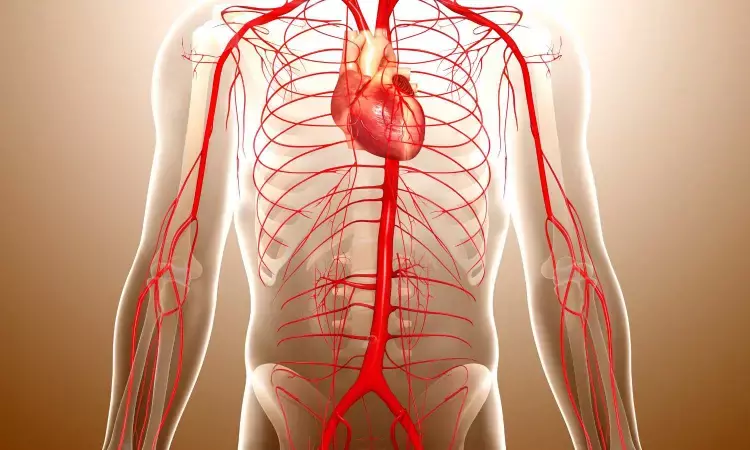- Home
- Medical news & Guidelines
- Anesthesiology
- Cardiology and CTVS
- Critical Care
- Dentistry
- Dermatology
- Diabetes and Endocrinology
- ENT
- Gastroenterology
- Medicine
- Nephrology
- Neurology
- Obstretics-Gynaecology
- Oncology
- Ophthalmology
- Orthopaedics
- Pediatrics-Neonatology
- Psychiatry
- Pulmonology
- Radiology
- Surgery
- Urology
- Laboratory Medicine
- Diet
- Nursing
- Paramedical
- Physiotherapy
- Health news
- Fact Check
- Bone Health Fact Check
- Brain Health Fact Check
- Cancer Related Fact Check
- Child Care Fact Check
- Dental and oral health fact check
- Diabetes and metabolic health fact check
- Diet and Nutrition Fact Check
- Eye and ENT Care Fact Check
- Fitness fact check
- Gut health fact check
- Heart health fact check
- Kidney health fact check
- Medical education fact check
- Men's health fact check
- Respiratory fact check
- Skin and hair care fact check
- Vaccine and Immunization fact check
- Women's health fact check
- AYUSH
- State News
- Andaman and Nicobar Islands
- Andhra Pradesh
- Arunachal Pradesh
- Assam
- Bihar
- Chandigarh
- Chattisgarh
- Dadra and Nagar Haveli
- Daman and Diu
- Delhi
- Goa
- Gujarat
- Haryana
- Himachal Pradesh
- Jammu & Kashmir
- Jharkhand
- Karnataka
- Kerala
- Ladakh
- Lakshadweep
- Madhya Pradesh
- Maharashtra
- Manipur
- Meghalaya
- Mizoram
- Nagaland
- Odisha
- Puducherry
- Punjab
- Rajasthan
- Sikkim
- Tamil Nadu
- Telangana
- Tripura
- Uttar Pradesh
- Uttrakhand
- West Bengal
- Medical Education
- Industry
Neutrophils Could Improve Survival in Ruptured AAA Cases: Study Suggests

China: A recent case-control study published in the Journal of Inflammation Research has shed light on a potential breakthrough in the early diagnosis of ruptured abdominal aortic aneurysms (rAAAs), highlighting the role of venous blood neutrophil count as a promising clinical indicator.
"Elevated neutrophil levels effectively distinguished ruptured abdominal aortic aneurysms (rAAAs) from unruptured cases," the researchers reported. "Neutrophil count (OR: 1.36) and D-dimer levels were significantly higher in patients with rAAAs, while abdominal pain (OR: 32.61) and back pain (OR: 91.95) showed strong associations with rupture. Neutrophils also demonstrated high diagnostic accuracy (AUC: 0.847), supporting their potential role in early detection."
Abdominal aortic aneurysms (AAAs) can become life-threatening when ruptured, but timely differentiation between ruptured (rAAAs) and unruptured cases remains a significant clinical challenge, as there are currently no effective, convenient, or widely accepted biomarkers to aid in early diagnosis.
To bridge this gap, Jing Zhang, Department of General Surgery, Department of Vascular Surgery, The First Hospital of Hebei Medical University, Shijiazhuang, People’s Republic of China, and colleagues aimed to identify potential markers that can aid in the early clinical distinction between ruptured and unruptured AAAs.
For this purpose, the researchers conducted a case–control study involving 276 patients over the past five years—220 with unruptured AAAs and 56 with rAAAs. After subgroup analysis, 229 cases (186 unruptured, 43 ruptured) were included. Potential diagnostic indicators were identified using univariate and logistic regression analyses, while their diagnostic performance and clinical utility were evaluated through ROC curves, decision curve analysis (DCA), and clinical impact curves (CIC).
The study led to the following findings:
- Elevated venous blood neutrophil counts were a significant risk factor for ruptured AAAs (OR = 1.316) in the initial analysis.
- Subgroup analysis confirmed that neutrophil levels (OR = 1.394) and D-dimer levels (OR = 1.023) were significantly higher in patients with rAAAs.
- Clinical symptoms such as abdominal pain (OR = 32.613) and back pain (OR = 91.946) showed a strong association with aneurysm rupture.
- ROC analysis indicated strong diagnostic performance for neutrophils (AUC: 0.847) and the neutrophil-to-lymphocyte ratio (NLR) (AUC: 0.795).
- Decision curve analysis (DCA) revealed that neutrophils offered the highest net clinical benefit among all indicators.
- Clinical impact curve (CIC) analysis further supported the model's practical utility in a clinical setting.
The study highlights the potential of neutrophil counts as a valuable indicator for distinguishing ruptured from unruptured abdominal aortic aneurysms. The association between elevated neutrophil levels and rAAAs suggests their usefulness in enhancing early diagnostic accuracy and guiding timely clinical decisions.
"These findings offer promising insight into improving diagnostic strategies and warrant further exploration for broader clinical application," the researchers concluded.
Reference:
Zhang J, He Z, Zheng L, He X, Li J, Zhang L. Factors Influencing Early Diagnosis of Ruptured Abdominal Aortic Aneurysms: The Role of Neutrophils. J Inflamm Res. 2025;18:5777-5790 https://doi.org/10.2147/JIR.S512895
Dr Kamal Kant Kohli-MBBS, DTCD- a chest specialist with more than 30 years of practice and a flair for writing clinical articles, Dr Kamal Kant Kohli joined Medical Dialogues as a Chief Editor of Medical News. Besides writing articles, as an editor, he proofreads and verifies all the medical content published on Medical Dialogues including those coming from journals, studies,medical conferences,guidelines etc. Email: drkohli@medicaldialogues.in. Contact no. 011-43720751


